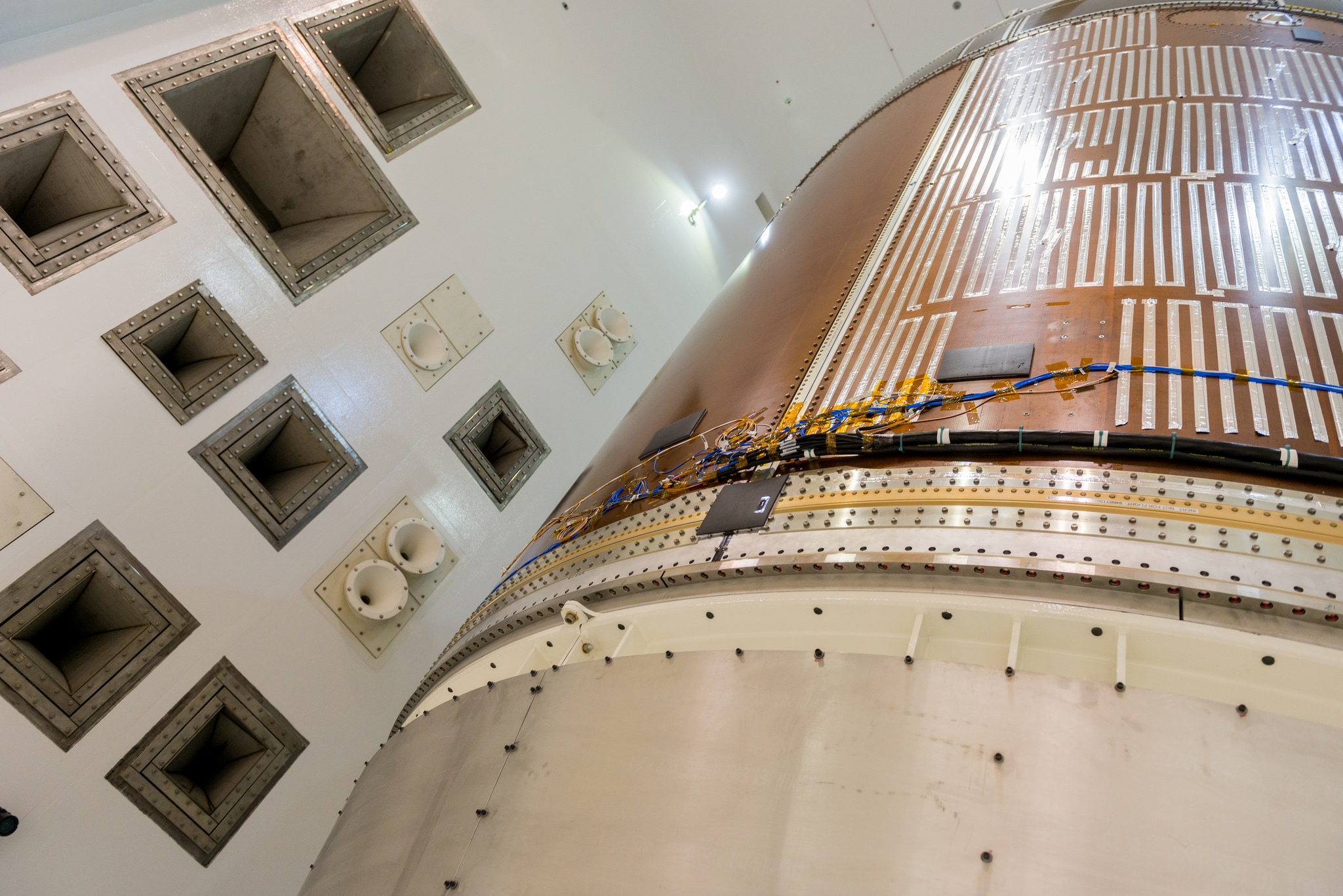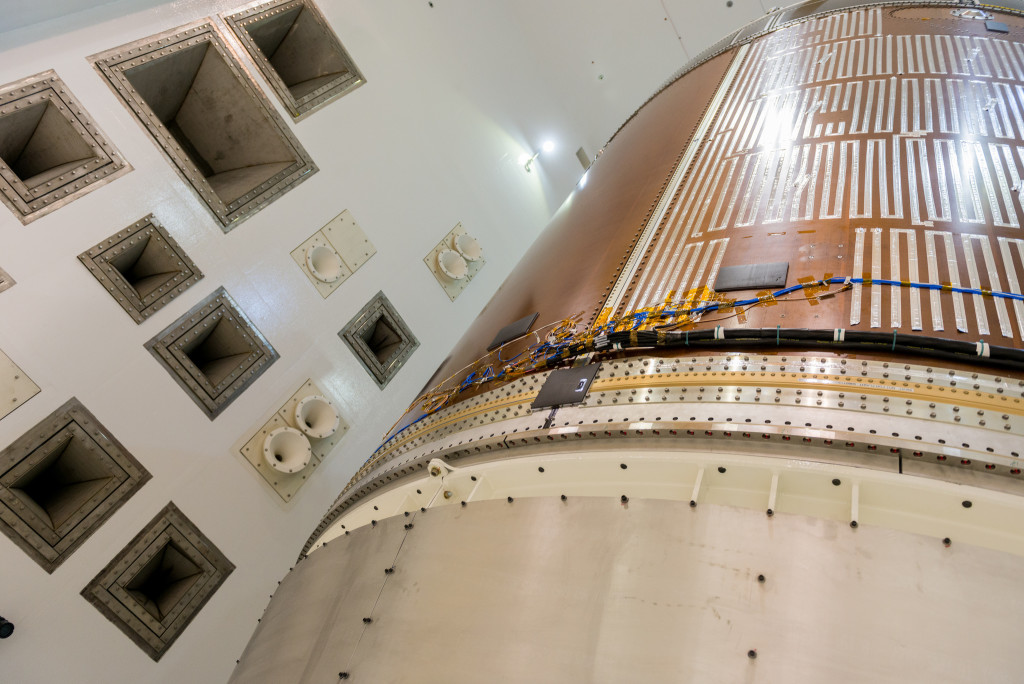On track to launch in 2018, NASA’s new Orion crew capsule continues to make progress. What’s the latest with the spacecraft that will take humans into deep space?
A structural representation of the service module – the part that will supply power, propulsion and life support systems – was recently tested.
When Orion launches in 2018, the force and pressure of the acoustic environment will be extreme. Tests were conducted to help ensure sure the service module will be able to withstand the tremendous forces of launch.
The structural representation of the service module underwent simulation at the Space Power Facility at NASA Glenn Research Center. This took place at the most powerful spacecraft acoustic test chamber in the world, Plum Brook Station’s Reverberant Acoustic Test Facility. Here, horns are embedded the walls of the chamber, and with supporting subsystems, noise is modulated and a wide range of acoustics is produced.
The series of tests were performed over several weeks. This was accomplished in two configurations–with “wet” and “dry” tanks.
During the “wet” configuration, a fuel simulant filled the module’s propellant tanks. The simulant modeled the density of Orion fuel.
The propellant tanks were emptied for the “dry” simulation to determine if noise affects the structure differently.
Testing was also carried out to help qualify the solar array wing of the service module. Engineers determined that the expected acoustic environment where the wing is housed matched the noise in the test chamber.
What will launch Orion into space? NASA’s new rocket – the most powerful in the world. Learn more about SLS and Orion at NASA.gov.


